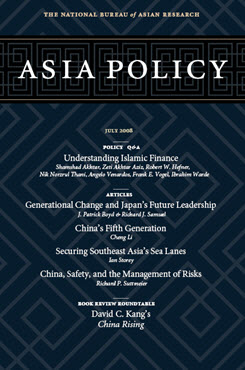Understanding Islamic Finance
Local Innovation and Global Integration
To gain a better understanding of the phenomenal rise of IF in general, of Southeast Asia’s particular role as an epicenter for IF innovation and development, and of the opportunities and challenges facing IF as an economically viable global financial industry, Asia Policy presents insights from a panel of senior finance officials, industry practitioners, and scholars.
Shamshad Akhtar, Zeti Akhtar Aziz, Robert W. Hefner, Nik Norzrul Thani, Angelo Venardos, Frank E. Vogel, Ibrahim Warde
What is Islamic finance (IF)? Islamic finance has recorded dramatic growth over the last decade or so, with a presence in more than 75 Muslim and non-Muslim countries and total financial assets now estimated to exceed $1 trillion. With the integration of IF and Islamic banking into the global economy, IF’s appeal as a market for and source of global capital is increasing. The industry’s rapid growth is marked by increases in Islamic financial products and services, the development of the industry’s regulatory frameworks, and enhanced international linkages.
To gain a better understanding of the phenomenal rise of IF in general, of Southeast Asia’s particular role as an epicenter for IF innovation and development, and of the opportunities and challenges facing IF as an economically viable global financial industry, Asia Policy presents insights from a panel of senior finance officials, industry practitioners, and scholars.
About Asia Policy
Asia Policy is a peer-reviewed scholarly journal presenting policy-relevant academic research on the Asia-Pacific that draws clear and concise conclusions useful to today’s policymakers. Asia Policy is published quarterly in January, April, July, and October and accepts submissions on a rolling basis. Learn more


